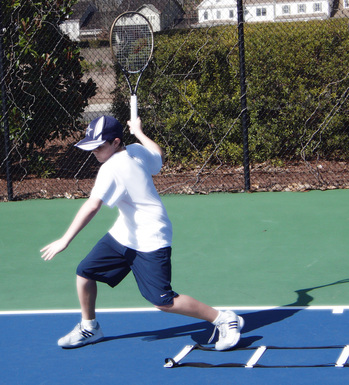The percentage of tennis participants in this study who reported an average grade of “A” was almost twice as high as non-sports participants. 48% of tennis players throughout the US reported an average grade of “A” as compared with only 25% for non-sport participants. (Sabo, Veliz et al. 2013). 48% of students in 8-10th grade reporting an “A” is a very interesting statistic. Interested to hear from the iTPA membership what you feel this statistic is saying. Is it how smart tennis players are? Is it a sign of grade inflation in the school system? Is it due to parental/family expectations on academics over individuals that do not play sports?
Suspensions In School
17% of tennis participants reported being suspended during the past school year, which was considerably lower in contact sports (27%), non-contact sports (23%), non-athletes (27%) (Sabo, Veliz et al. 2013). “Because youth athletic participation in the U.S. is generally greater among more affluent and predominantly White populations, the discovery of positive outcomes attributed to sport participation are often later found to be owed to socioeconomic differences or racial/ethnic differences (Sabo, Veliz et al. 2013).” What are initially considered the “benefits” of youth sports participation are often more fundamentally owed to larger social forces that flow through sports rather than the primary influence of sports (Sabo, Veliz et al. 2013). However, this study found that positive relationships between tennis participation and academic performance were evident across family socioeconomic levels (low, middle and high) (Sabo, Veliz et al. 2013). Meaning that at every socioeconomic level, tennis participation was most highly correlated with higher academic performance than other sports participation and non-sport participation (Sabo, Veliz et al. 2013). This paragraph is one of the most impactful findings from the entire report. It clearly shows that tennis participation is linked to greater academic performance even when socioeconomic levels are accounted for.
An interesting finding for parents: High School tennis athletes had lower rates of consumption for alcohol, marijuana and cigarette smoking compared to other athletes and especially to non-athletes (Sabo, Veliz et al. 2013). Interesting tip for parents: One way to reduce your child’s potential for performing illegal activities and using illicit substances is to have them participate in tennis.
Here is the link for the executive summary of The USTA Serves Special Report, More Than a Sport: Tennis, Education and Health http://assets.usta.com/assets/822/15/More_than_a_Sport_Executive_Summary-v7-web.pdf
Here is the link for the full report of the survey data of The USTA Serves Special Report, More Than a Sport: Tennis, Education and Health http://assets.usta.com/assets/822/15/More_than_a_Sport_Full_Report_2.27.13.pdf





 RSS Feed
RSS Feed
